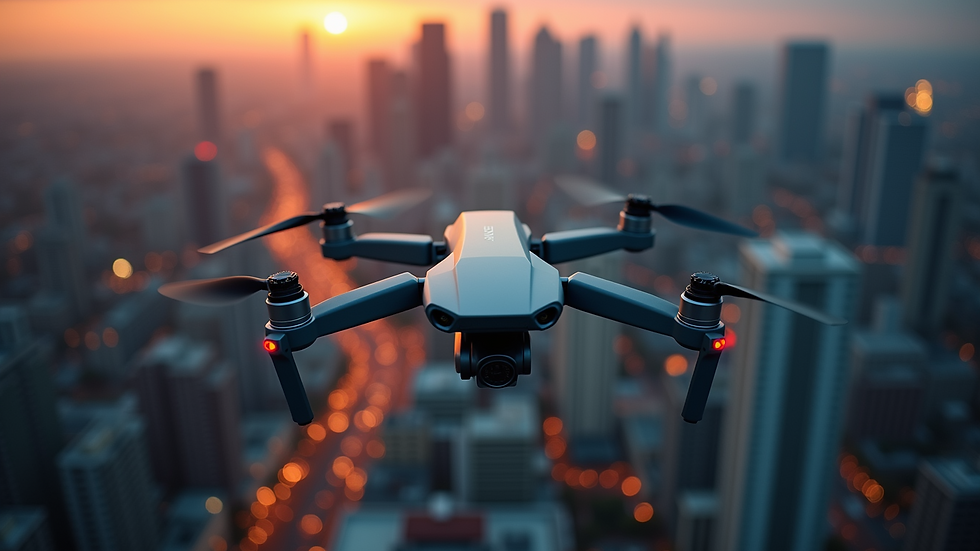Master the Art of Photography and Videography
- Jordan Licon

- 21 minutes ago
- 4 min read
Photography and videography are powerful tools that can transform the way you tell stories, capture moments, and connect with your audience. Whether you are a beginner or looking to refine your skills, mastering these arts requires a blend of creativity, technical knowledge, and strategic thinking. In this post, I will share practical tips and visual content strategies that will help you elevate your craft and produce stunning images and videos every time.
Understanding the Basics of Visual Content Strategies
Before diving into the technical aspects, it’s essential to grasp the core principles of visual content strategies. These strategies guide how you plan, shoot, and edit your work to ensure it resonates with viewers and achieves your goals.
Plan Your Shots: Think about the story you want to tell. What emotions or messages do you want to convey? Planning helps you choose the right locations, lighting, and subjects.
Focus on Composition: Use the rule of thirds, leading lines, and framing to create balanced and engaging images.
Lighting is Key: Natural light can be your best friend. Learn how to use it effectively or supplement it with artificial lighting.
Consistency Matters: Develop a style or theme that makes your work recognizable and cohesive.
Edit Thoughtfully: Post-processing should enhance your images and videos without overdoing it.
By applying these strategies, you set a strong foundation for your photography and videography projects.

Essential Equipment and How to Use It
Having the right gear is important, but knowing how to use it well is even more critical. Here’s a straightforward guide to the essential equipment and tips on maximizing their potential:
Camera: Whether you use a DSLR, mirrorless, or even a smartphone, understand your device’s settings. Learn about aperture, shutter speed, and ISO to control exposure.
Lenses: Different lenses serve different purposes. A wide-angle lens is great for landscapes, while a prime lens excels in portraits.
Tripod: Stabilizes your shots, especially in low light or for long exposures.
Microphone: For videography, clear audio is as important as clear visuals. Invest in a good external microphone.
Lighting Equipment: Reflectors, softboxes, and ring lights can dramatically improve your lighting setup.
Practice using each piece of equipment in various scenarios. The more familiar you are, the more confident you will be when shooting.
Mastering Composition and Framing Techniques
Composition is the art of arranging elements within your frame to create a visually pleasing image or video. Here are some techniques I rely on to make my work stand out:
Rule of Thirds: Imagine your frame divided into nine equal parts. Place key elements along these lines or their intersections.
Leading Lines: Use natural or architectural lines to guide the viewer’s eye toward the subject.
Symmetry and Patterns: These can create striking visuals that are easy to appreciate.
Depth: Add layers to your shots by including foreground, middle ground, and background elements.
Negative Space: Sometimes, less is more. Empty space can highlight your subject and create balance.
Try experimenting with these techniques in your next shoot. You’ll notice how they change the story your images tell.

Tips for Capturing Stunning Videos
Videography requires a slightly different approach than photography, but many principles overlap. Here’s how to create compelling videos:
Plan Your Storyboard: Outline your shots and sequences before filming.
Use Smooth Movements: Avoid shaky footage by using stabilizers or gimbals.
Mind Your Audio: Record in quiet environments and use external microphones.
Control Lighting: Consistent lighting prevents distracting shadows and color shifts.
Edit with Purpose: Cut unnecessary scenes and add transitions to keep viewers engaged.
Remember, practice makes perfect. Review your footage critically and learn from each project.
How to Improve Your Skills Continuously
Mastering photography and videography is a journey, not a destination. Here are some ways to keep growing:
Take Workshops and Online Courses: Learning from professionals can accelerate your progress.
Join Communities: Share your work and get feedback from fellow creatives.
Experiment Regularly: Try new styles, subjects, and techniques.
Analyze Great Work: Study photos and videos you admire to understand what makes them effective.
Stay Updated: Technology and trends evolve, so keep up with the latest tools and ideas.
By committing to continuous improvement, you’ll build confidence and develop a unique voice in your visual storytelling.
Bringing It All Together
If you want to truly excel, consider exploring professional resources and portfolios that inspire. For example, I often refer to photography and videography experts who showcase exceptional work and share valuable insights. Their approach to lighting, composition, and storytelling can teach you a lot.
Remember, the key to mastering this art is patience and practice. Every shot you take is a step closer to creating breathtaking visual content that speaks volumes.
Keep shooting, keep learning, and most importantly, enjoy the process of capturing the world through your lens.



Comments